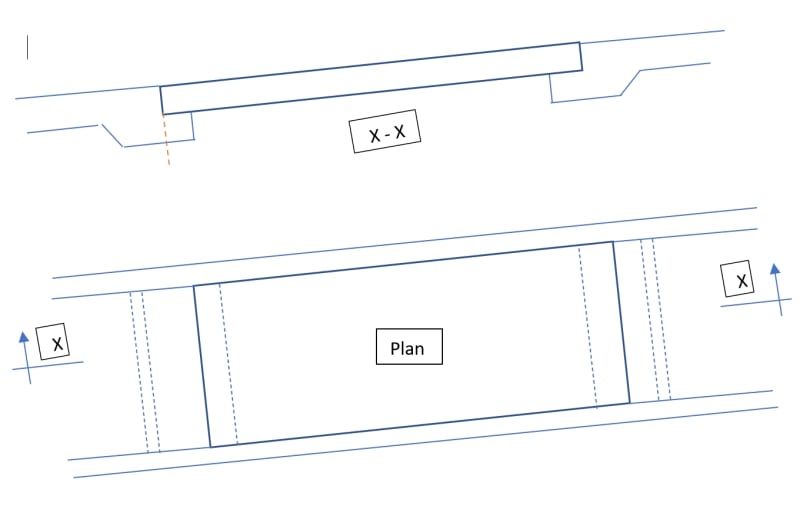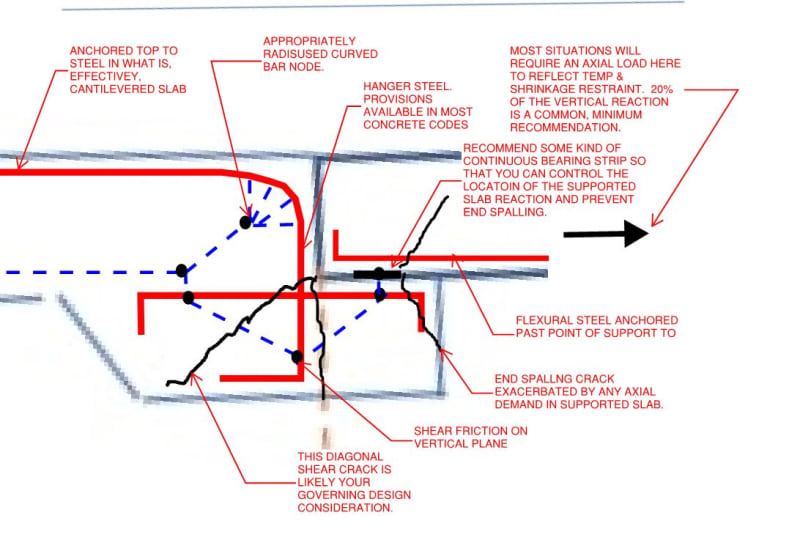Hi,
I am tasked to design a ramp in a building. The ramp is supported by slabs at either end via corbels.
The slabs are supported by walls at either sides. So the corbel is spanning between walls.
I modeled the ramp using Inducta SLB Software, with line supports at the corbel locations to obtain reactions per m of the corbel.
My questions is:
What is the best way to design the corbels?
Do I get the reaction and check the shear capacity of the section under the ramp (denoted in dashed orange line in my sketch). Then I check it as a simply supported beam that spans between the walls?
I checked many references and software (e.g. Tekla Tedds), they focus on corbels on columns using strut and tie method, but I could not find references to slab corbels.
Thank you very much.

I am tasked to design a ramp in a building. The ramp is supported by slabs at either end via corbels.
The slabs are supported by walls at either sides. So the corbel is spanning between walls.
I modeled the ramp using Inducta SLB Software, with line supports at the corbel locations to obtain reactions per m of the corbel.
My questions is:
What is the best way to design the corbels?
Do I get the reaction and check the shear capacity of the section under the ramp (denoted in dashed orange line in my sketch). Then I check it as a simply supported beam that spans between the walls?
I checked many references and software (e.g. Tekla Tedds), they focus on corbels on columns using strut and tie method, but I could not find references to slab corbels.
Thank you very much.


